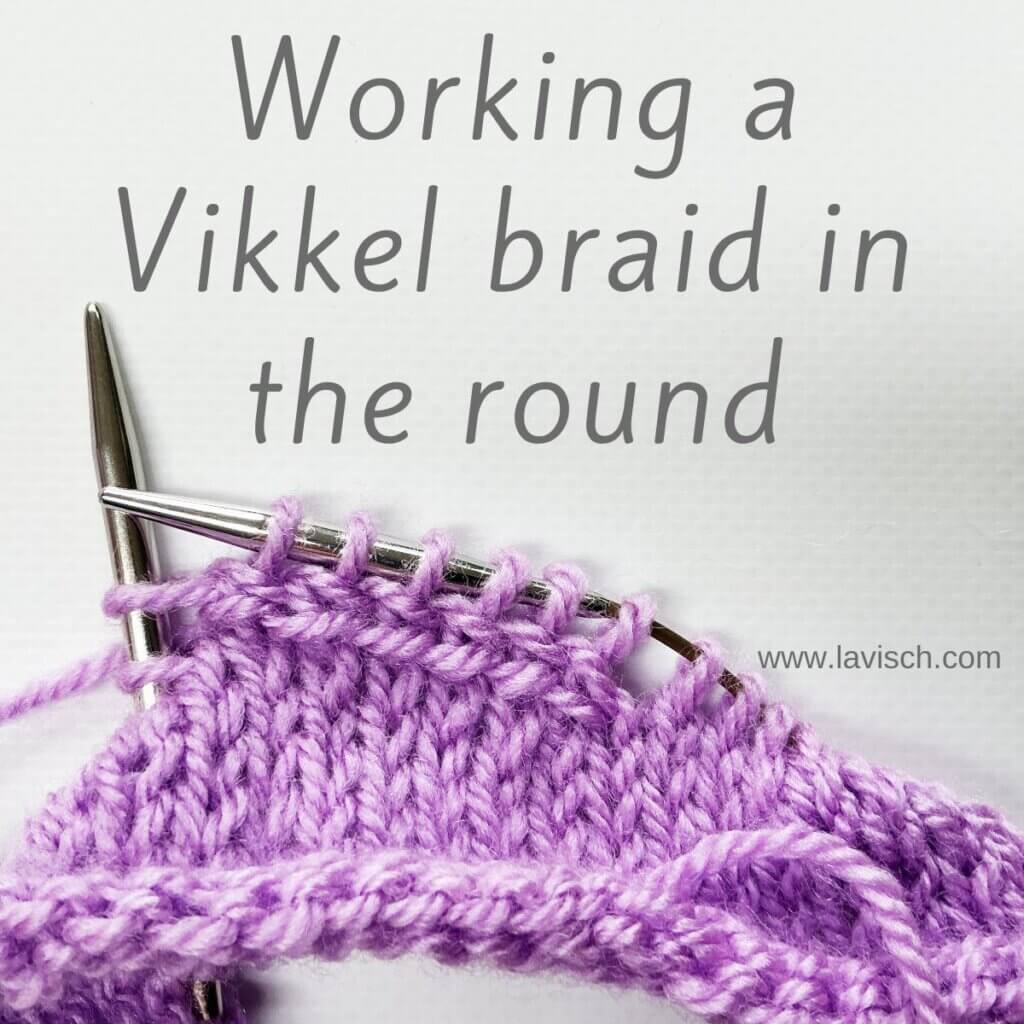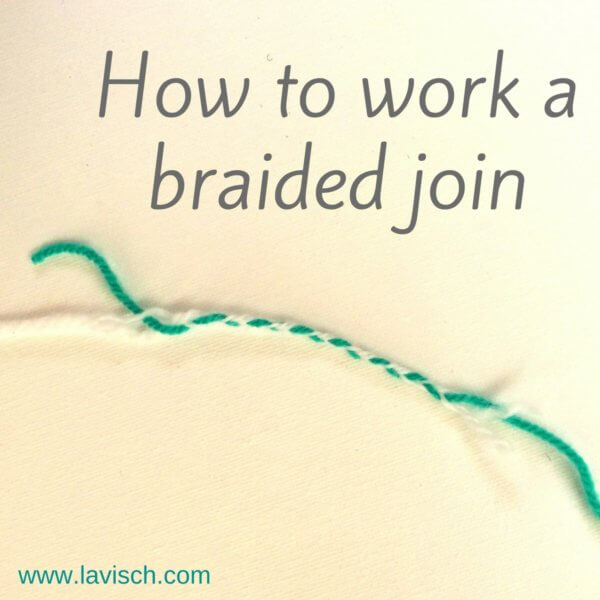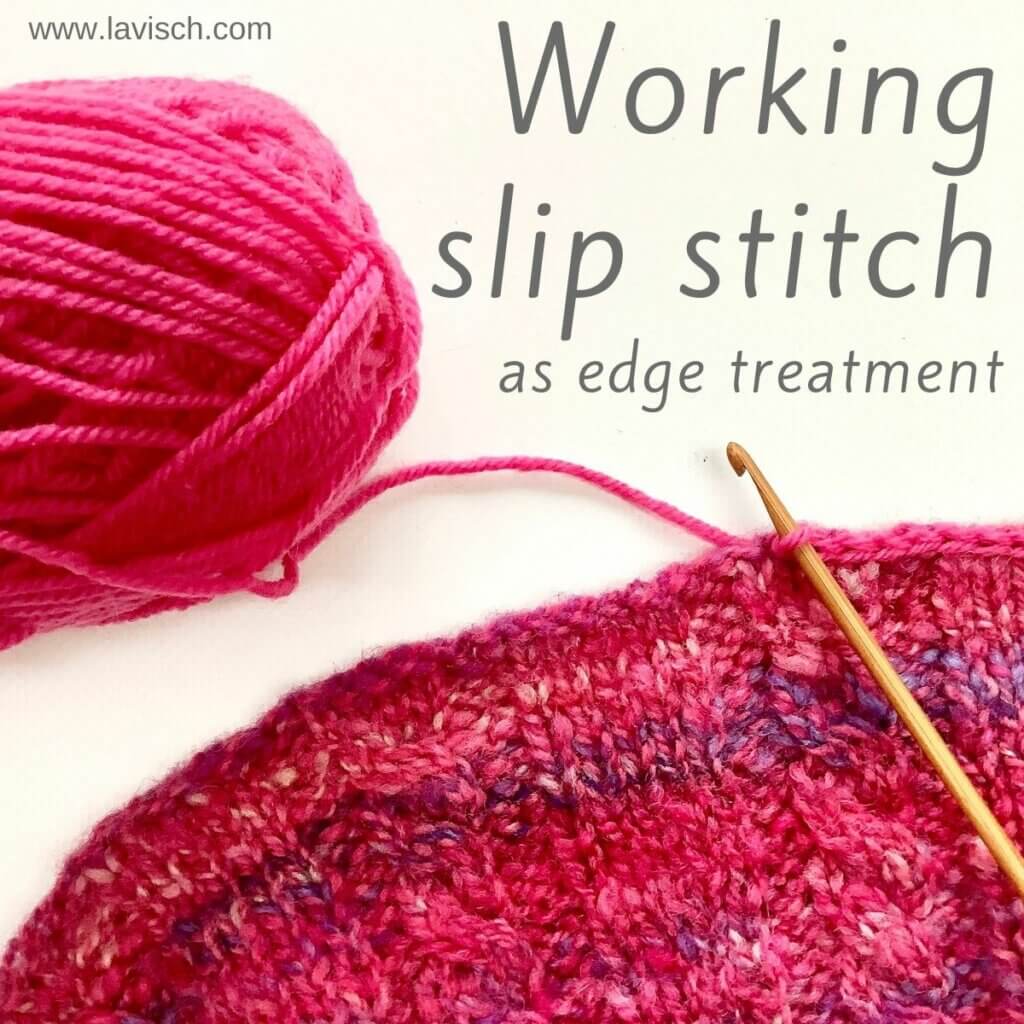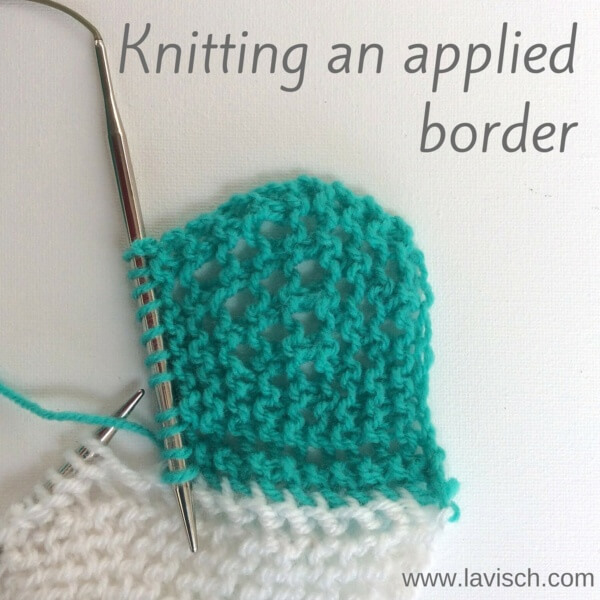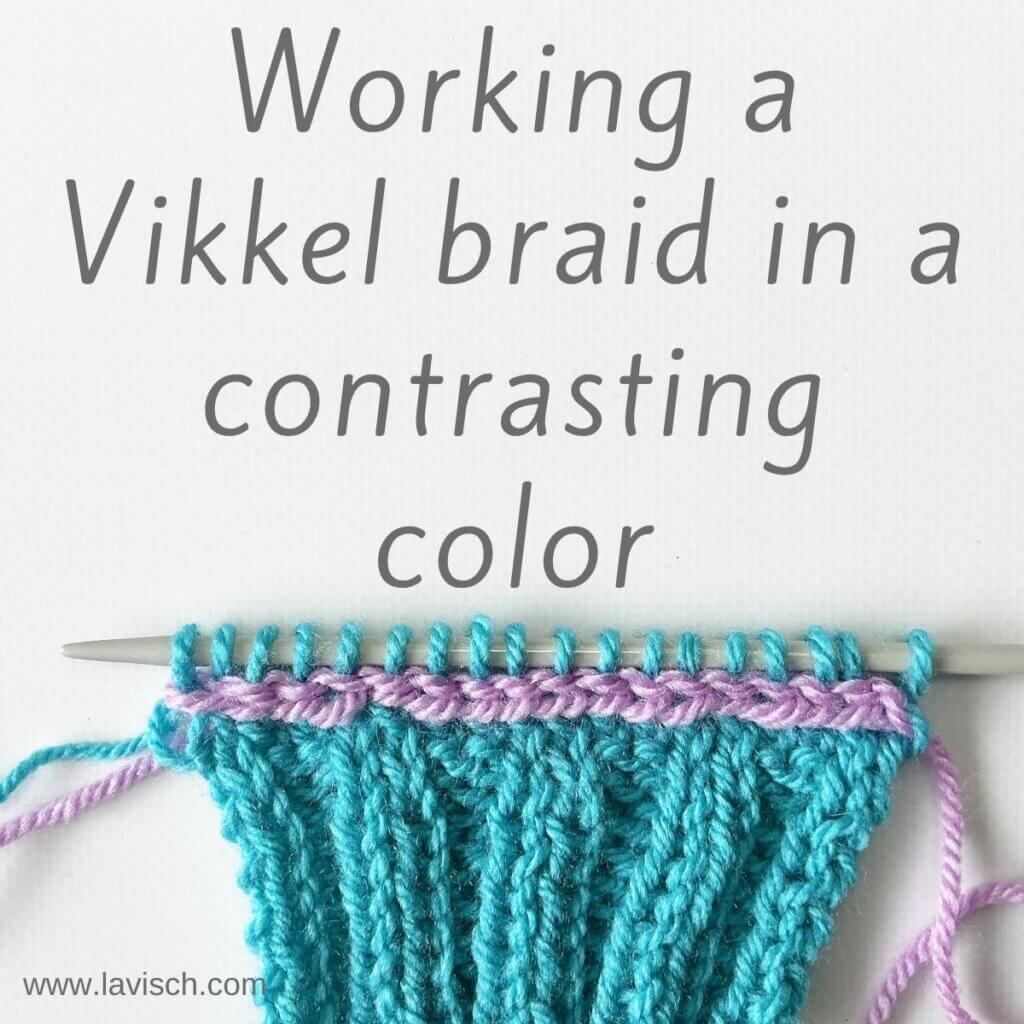
A Vikkel braid, also known as an Estonian or lateral braid, is a decorative knitting technique used to create a horizontal braid-like texture across the fabric. It’s often used in traditional Estonian knitting, especially in mittens and cuffs, to add both structure and ornamentation. It can serve as a nice demarcation of the ribbing and the rest of the fabric. Especially when working the Vikkel braid in a contrasting color. Its key feature, is that it creates a raised, twisted horizontal band that looks like a chain of stitches.
The braid is worked in a single row. It’s common to have a plain row in the main color above and below it to frame it nicely. This also prevents the purl stitches in the ribbing from distorting the braid. Some folks advise dropping down a needle size when working the braid, because it can be a tad loose otherwise. In this how-to, I didn’t do that and found the tension to be ok. But, be warned, and try it out for yourself and adjust where needed.
In this article, I’m showing you how to do a Vikkel braid worked flat in a single contrasting color.
Materials used
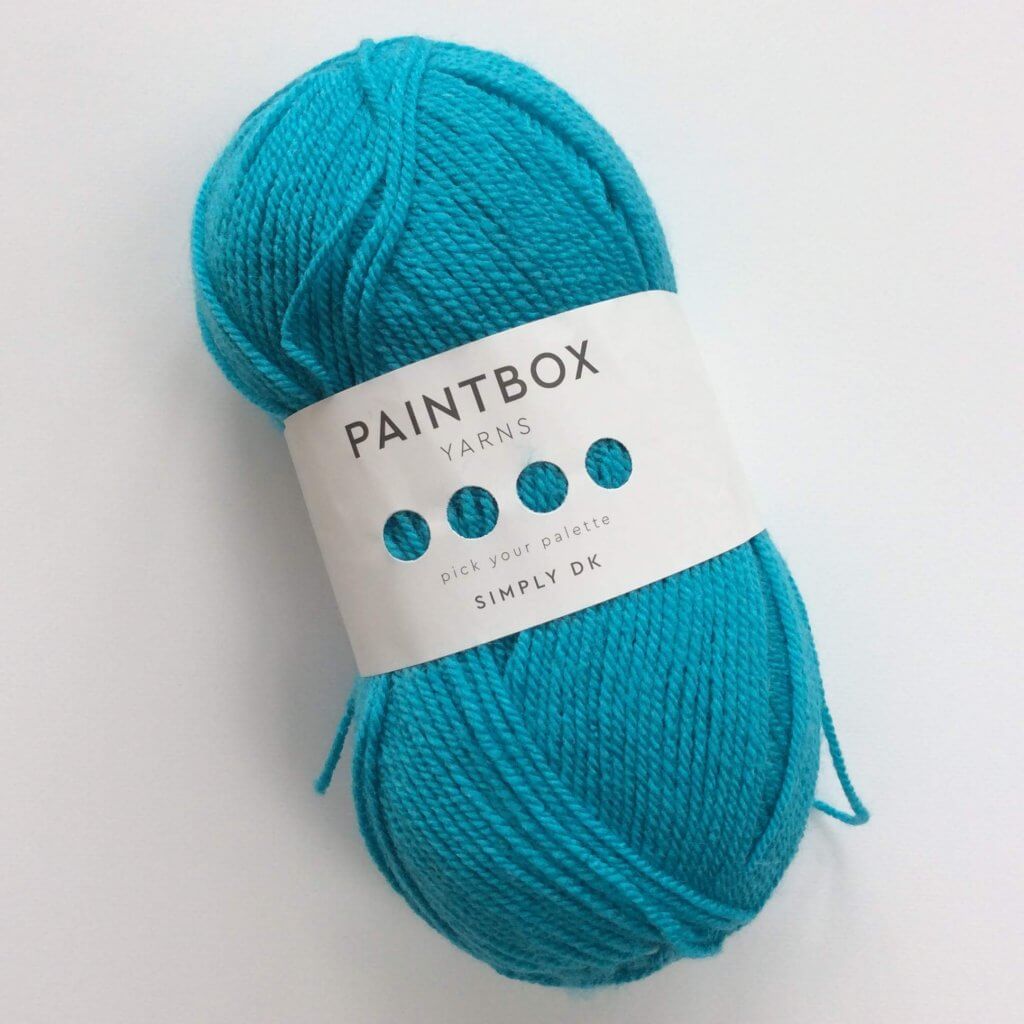

Yarn: Paintbox Yarns Simply DK, a good value, good quality 100% acrylic yarn, here in Marine Blue for MC and Tea Rose for the CC.
Needles: This is a pair of straights that I picked up at the second-hand store when I started knitting, brand unknown.
Working a Vikkel braid in a contrasting color step by step
A Vikkel braid can be worked over any number of stitches, after or just before ribbing. In this example, I’m using a swatch in 2×2 rib.
- I’m going to work my Vikkel braid onto this swatch.
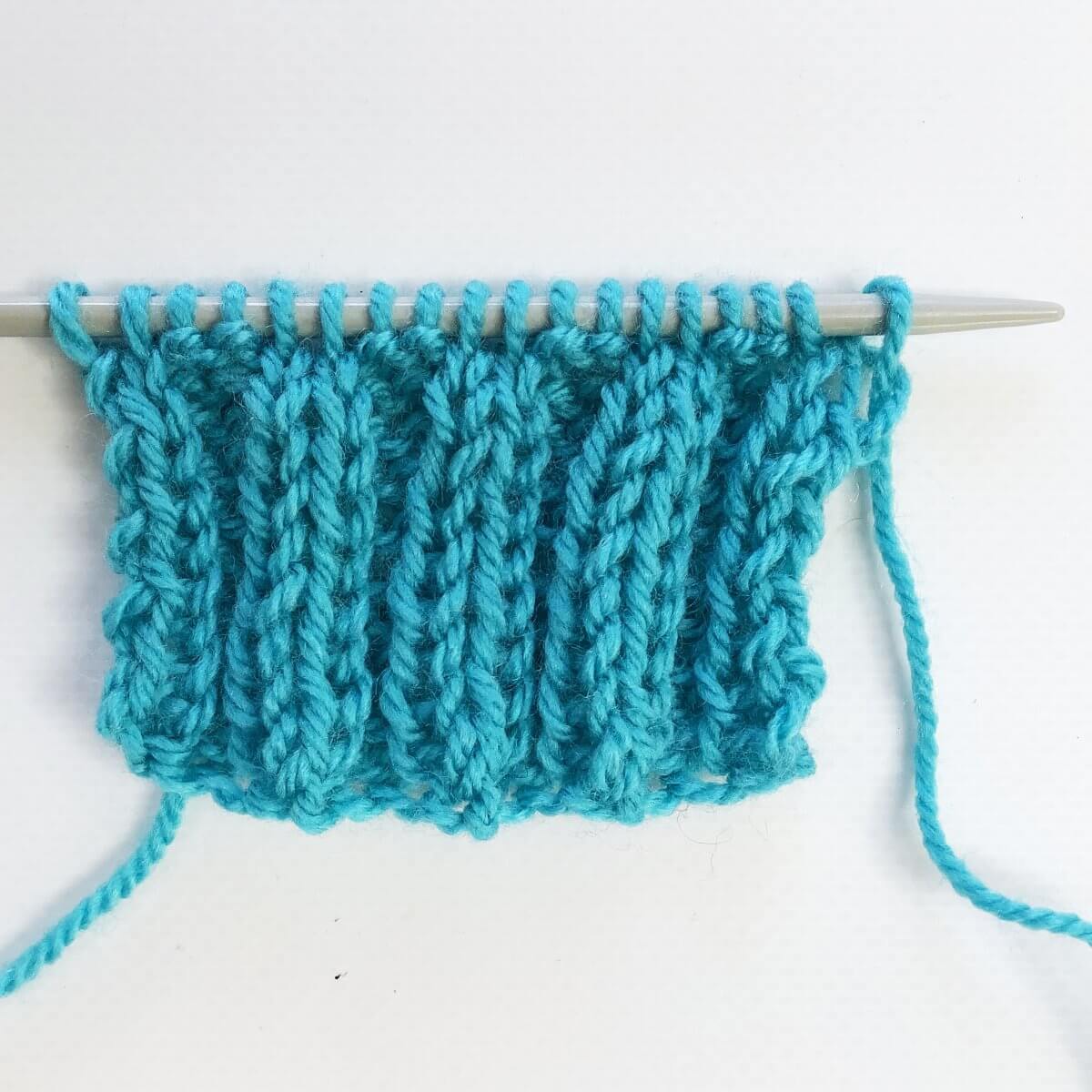
- To prevent any distortion in the braid, I’m working another right side row in 2×2 rib, followed by a wrong side row in purl, both in the main color (MC) used.
That single row without patterning won’t be noticeable in the final result, but will prevent the braid from being wobbly.

- With the yarn in the contrasting color (CC), cast-on a stitch. Here I used the knitted-on cast-on, but the cable cast-on would also work.
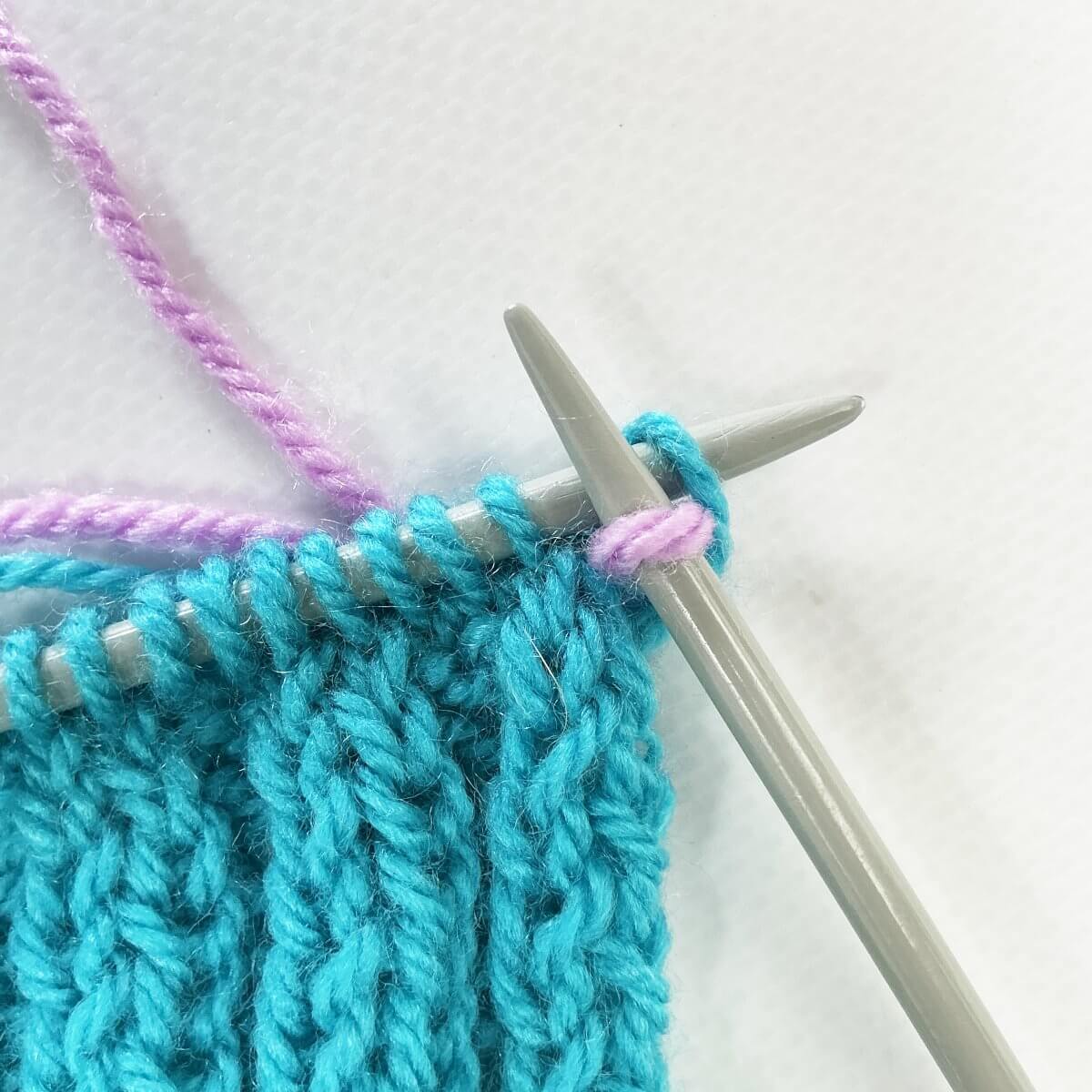
- Slip the newly cast-on stitch back to the left-hand needle.
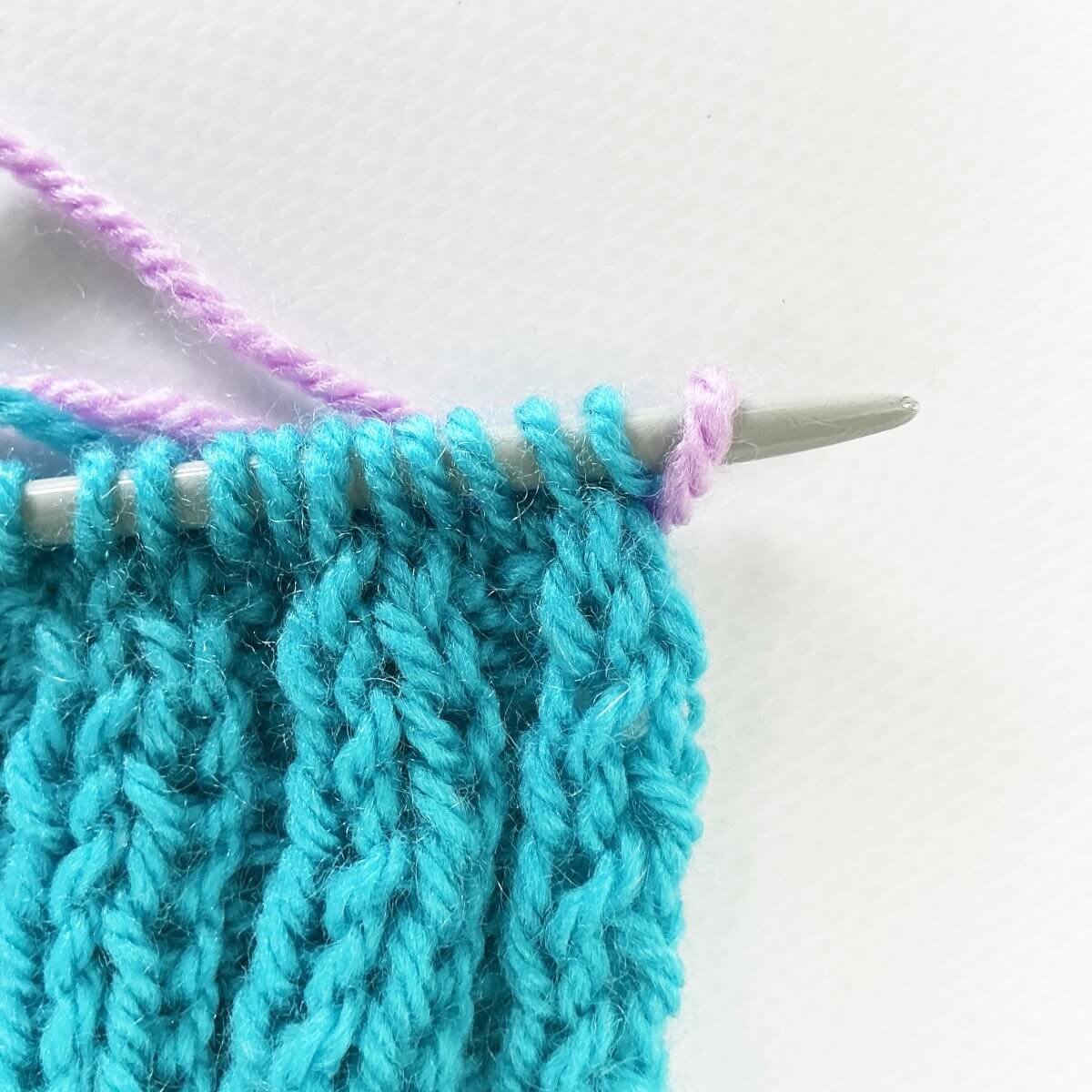
- Next, insert the right-hand needle through the back loop of the 2nd stitch.
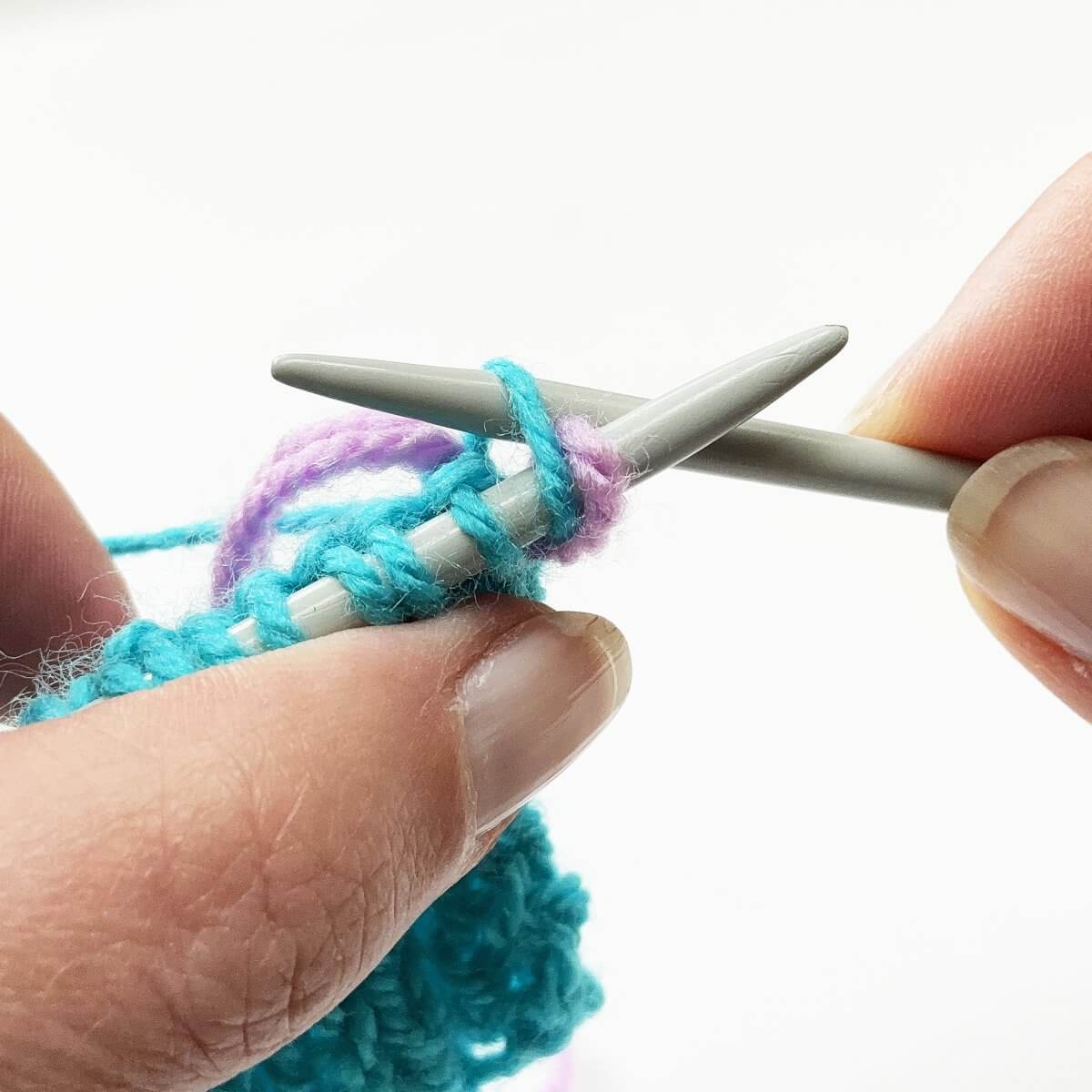
- Because it’s a stitch in the MC we’re knitting into, wrap the MC yarn around….
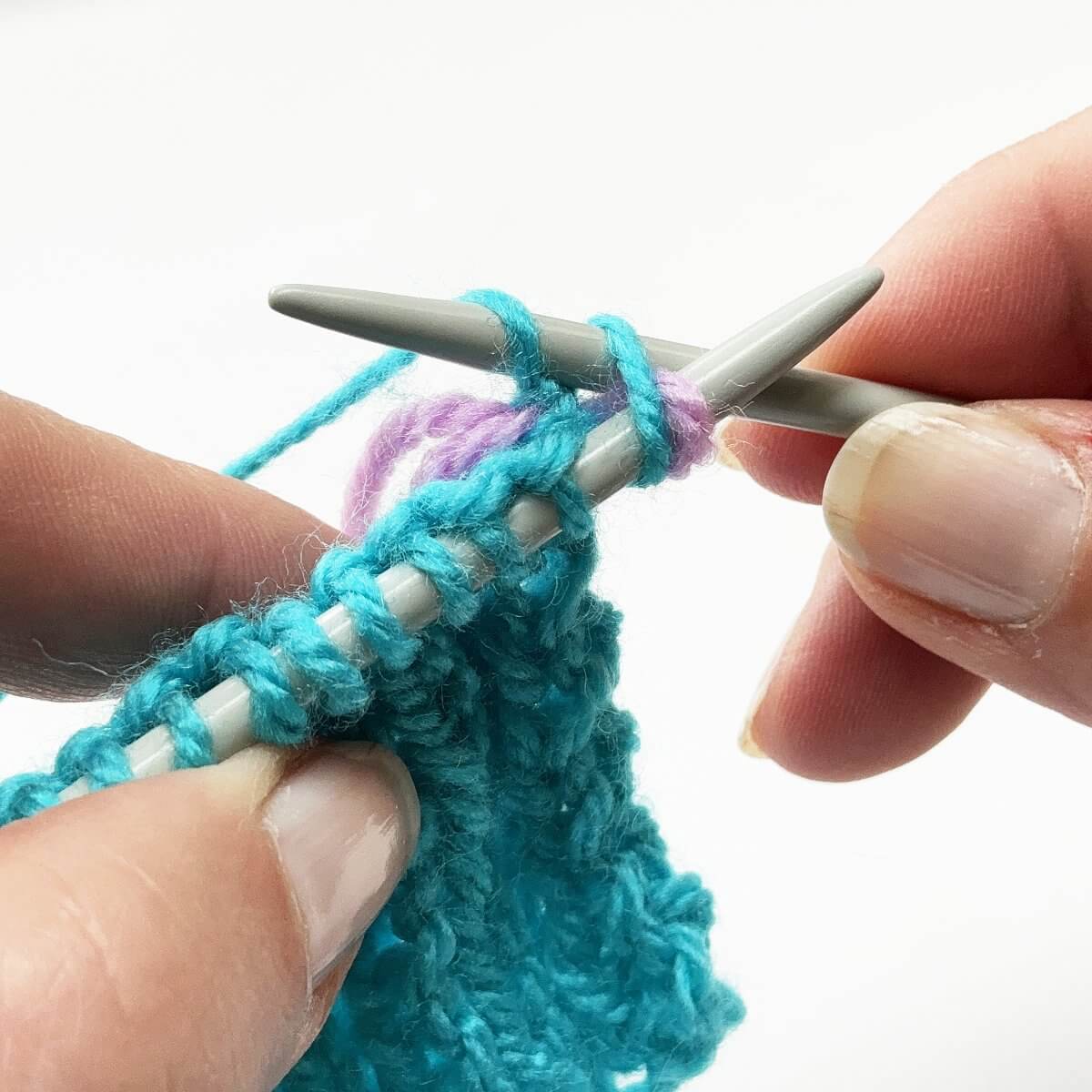
- …. and pull it through.
Do not slip the stitch of the needle yet!
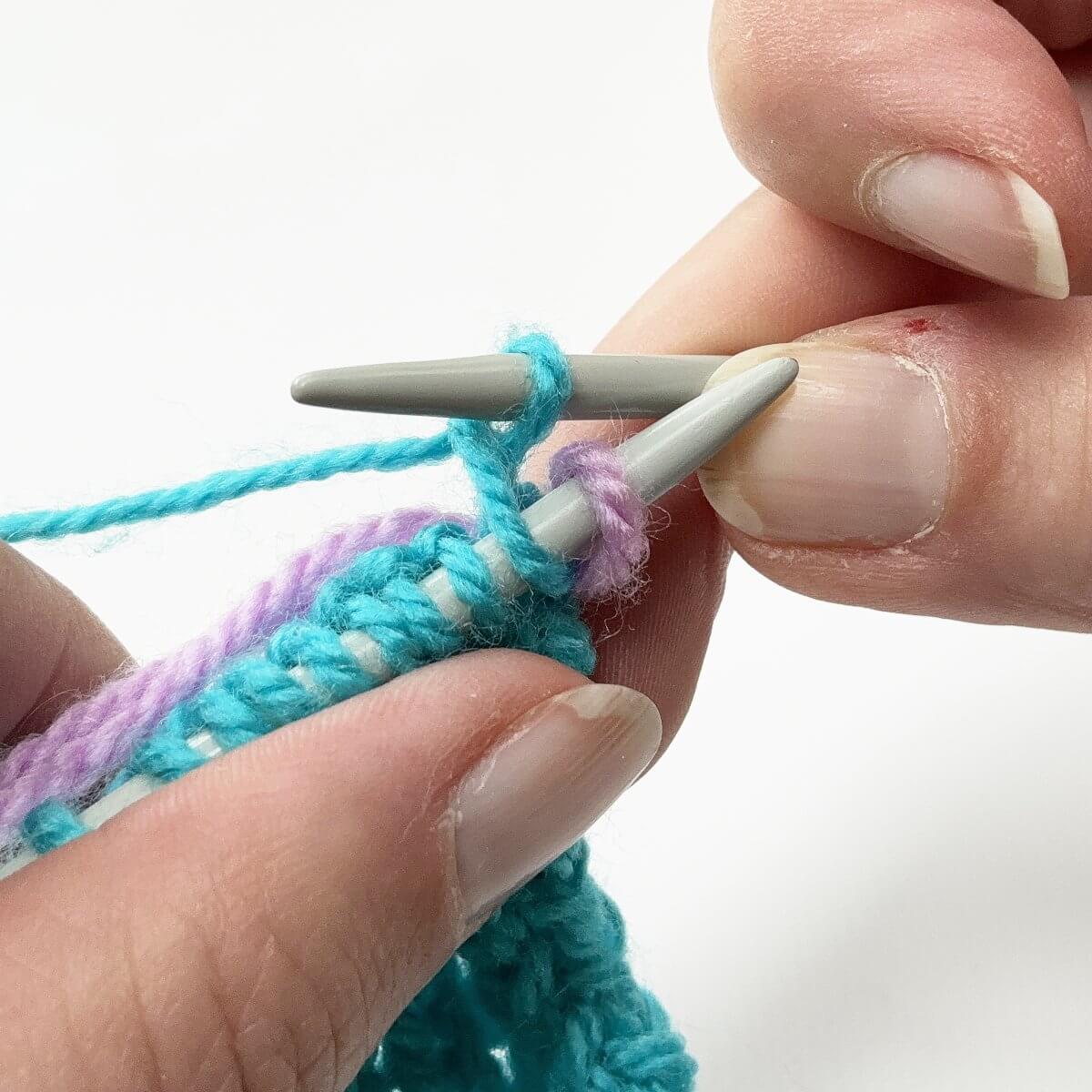
- Now, insert the needle into the first (CC) stitch as if to knit (because we’re going to knit it).
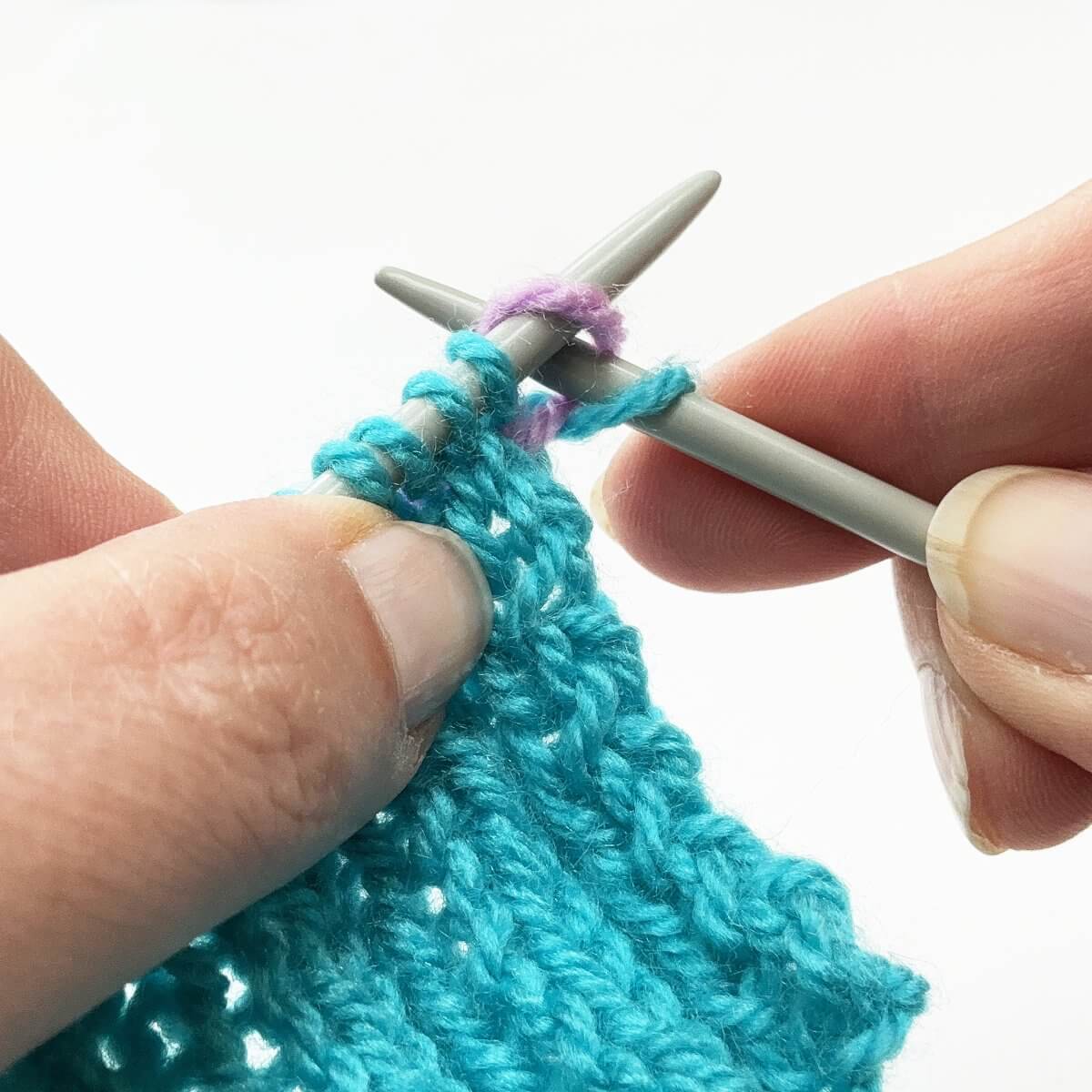
- Because this is a CC stitch, we’re knitting into, use the CC yarn to wrap around the needle….
Because we’re working with 2 different colors of yarn, you will have to manage how to hold the strands, and be consistent throughout. I found it easiest to hold them in such a way, that I could grab the MC yarn from below, and the CC yarn from above.
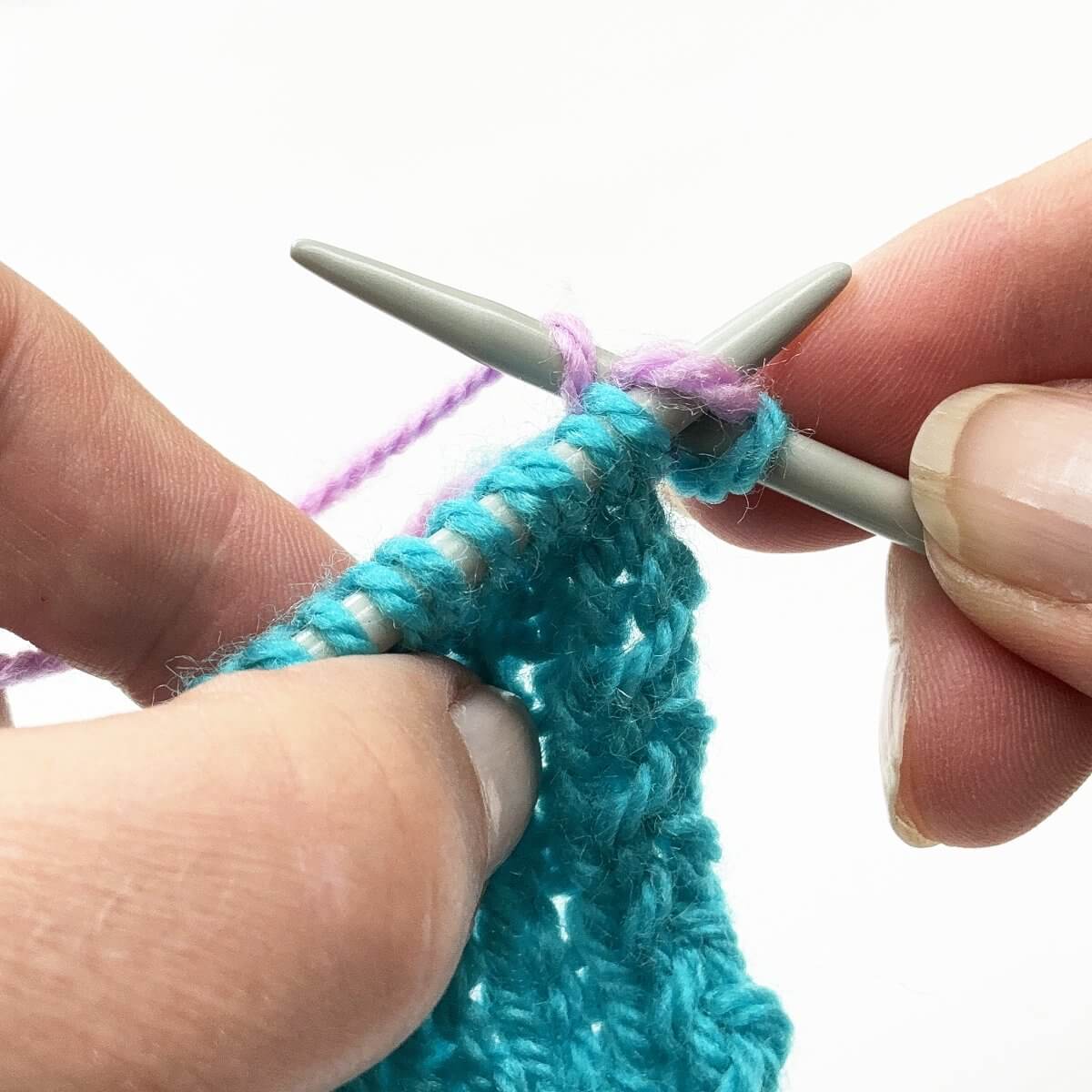
- … and pull it through.
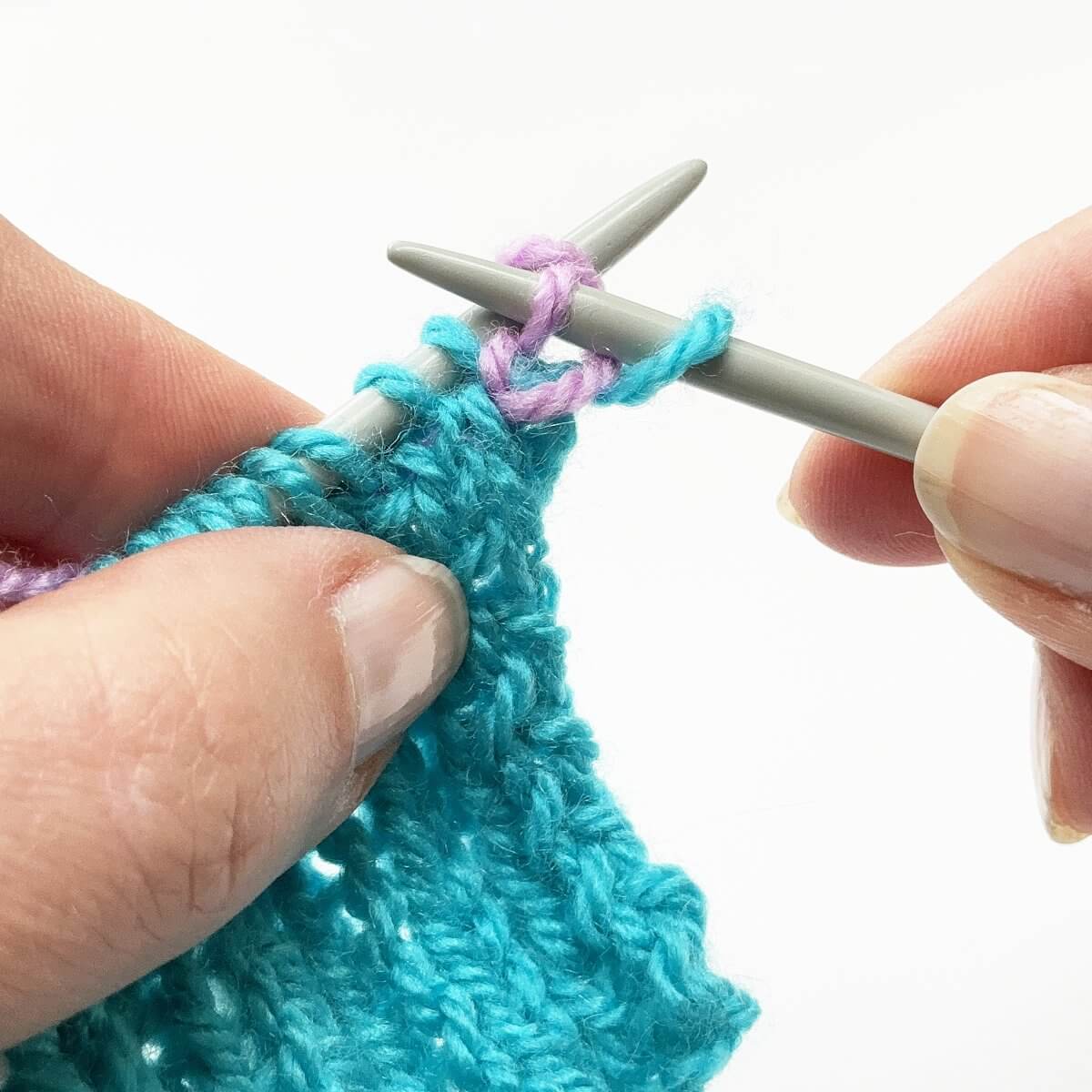
- Now you can slip the 2 stitches nearest to the tip of the left-hand needle off.
It can be confusing which loops are to be slipped off, in my case it helped to look at the ribbing below the braid. I started out with 2 knit stitches, and CO on one extra. This meant that after slipping 2 stitches off, I had to have 1 knit stitch on the needle left.
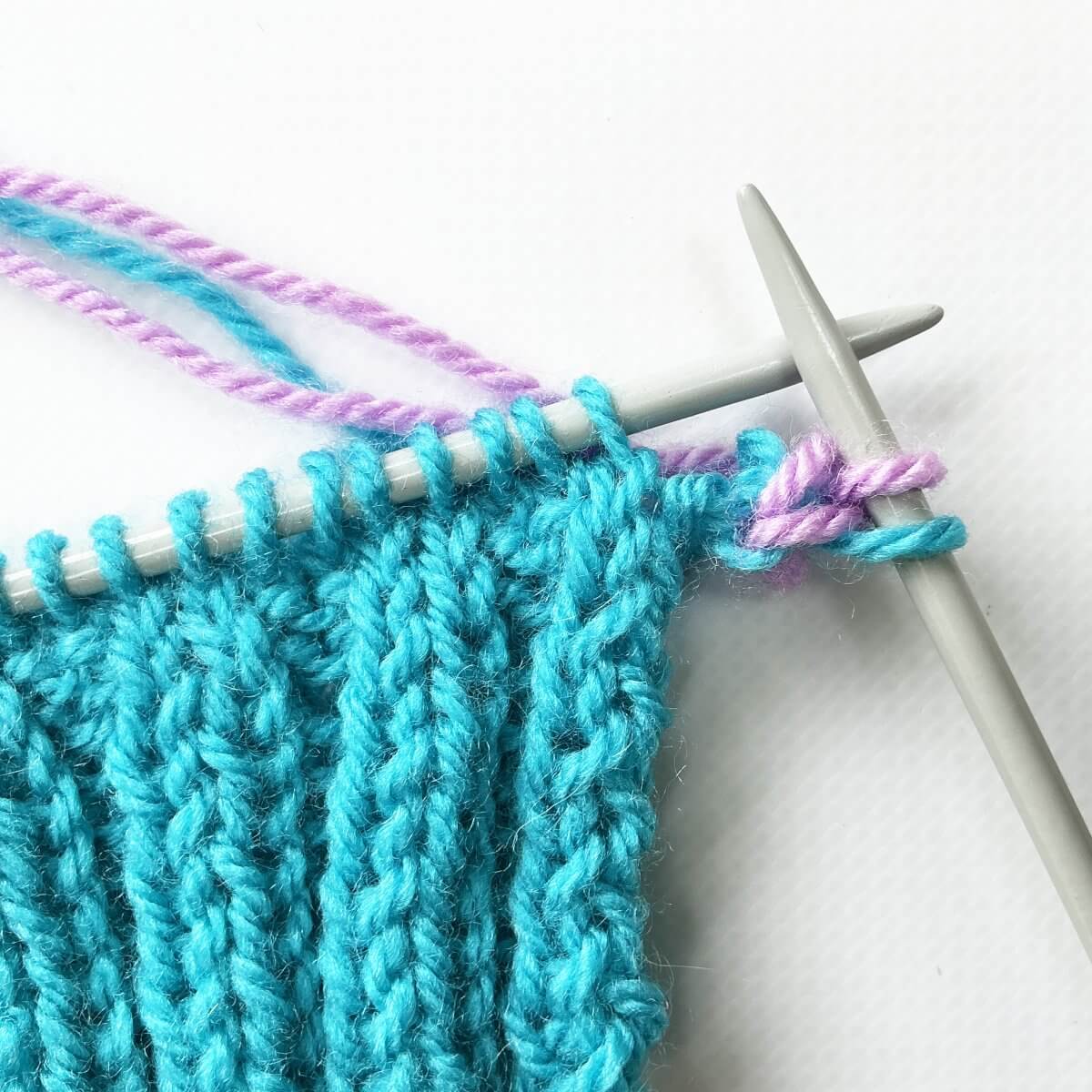
- Slip the stitch nearest to the tip of the right-hand needle, back to the left-hand needle.
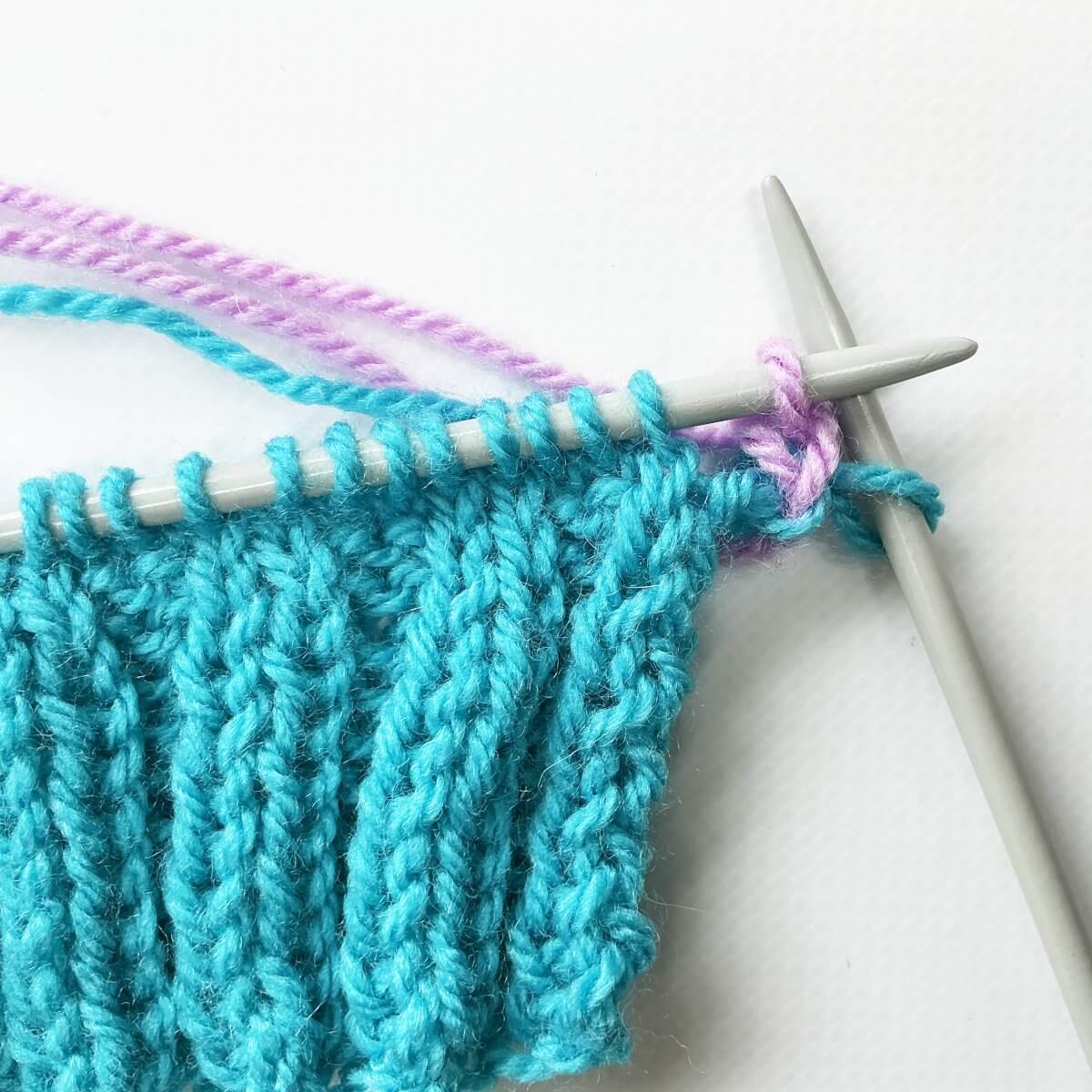
- Repeat steps 5-12 until 1 stitch remains.
This is how it looks by then.
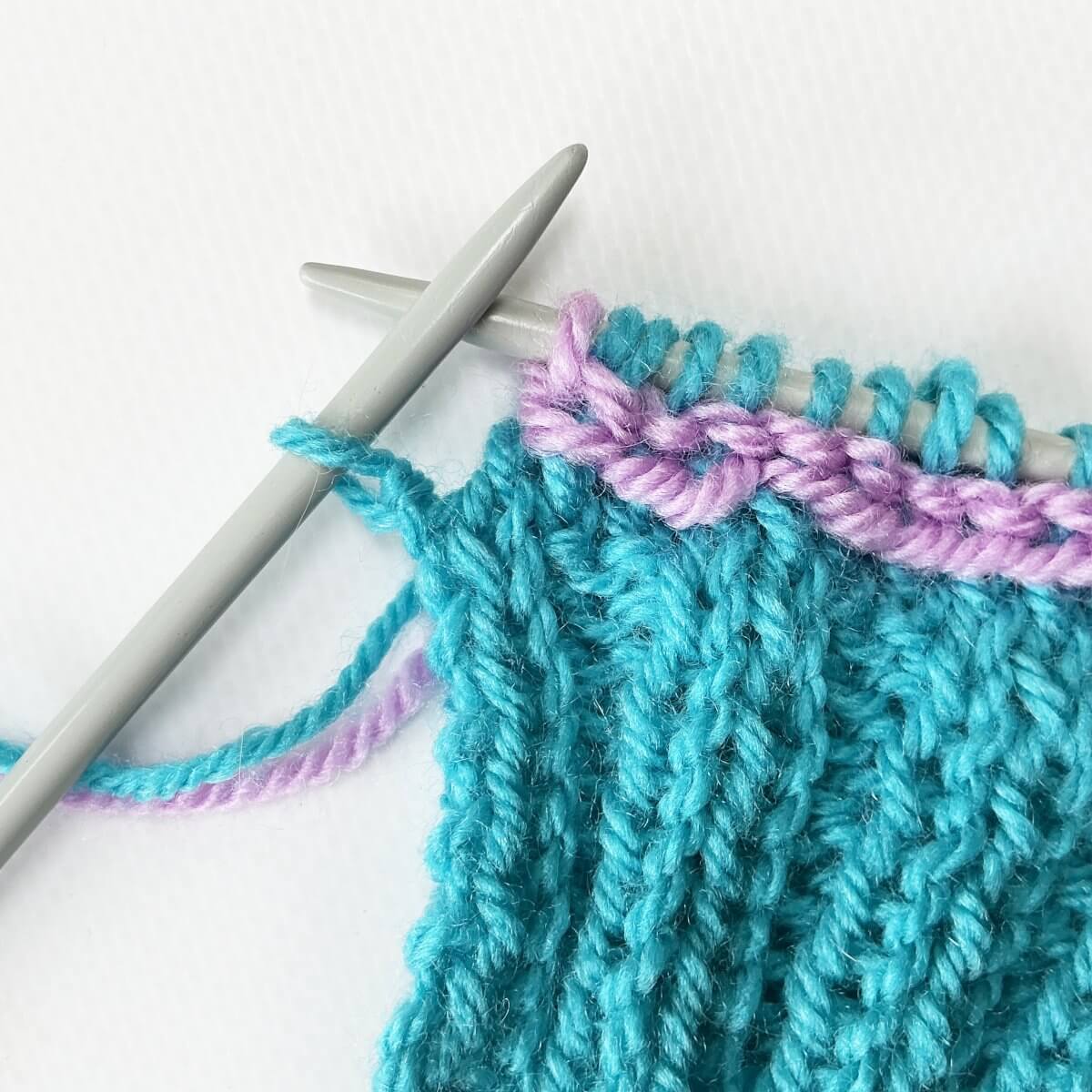
- Next, knit the stitch using the MC yarn.
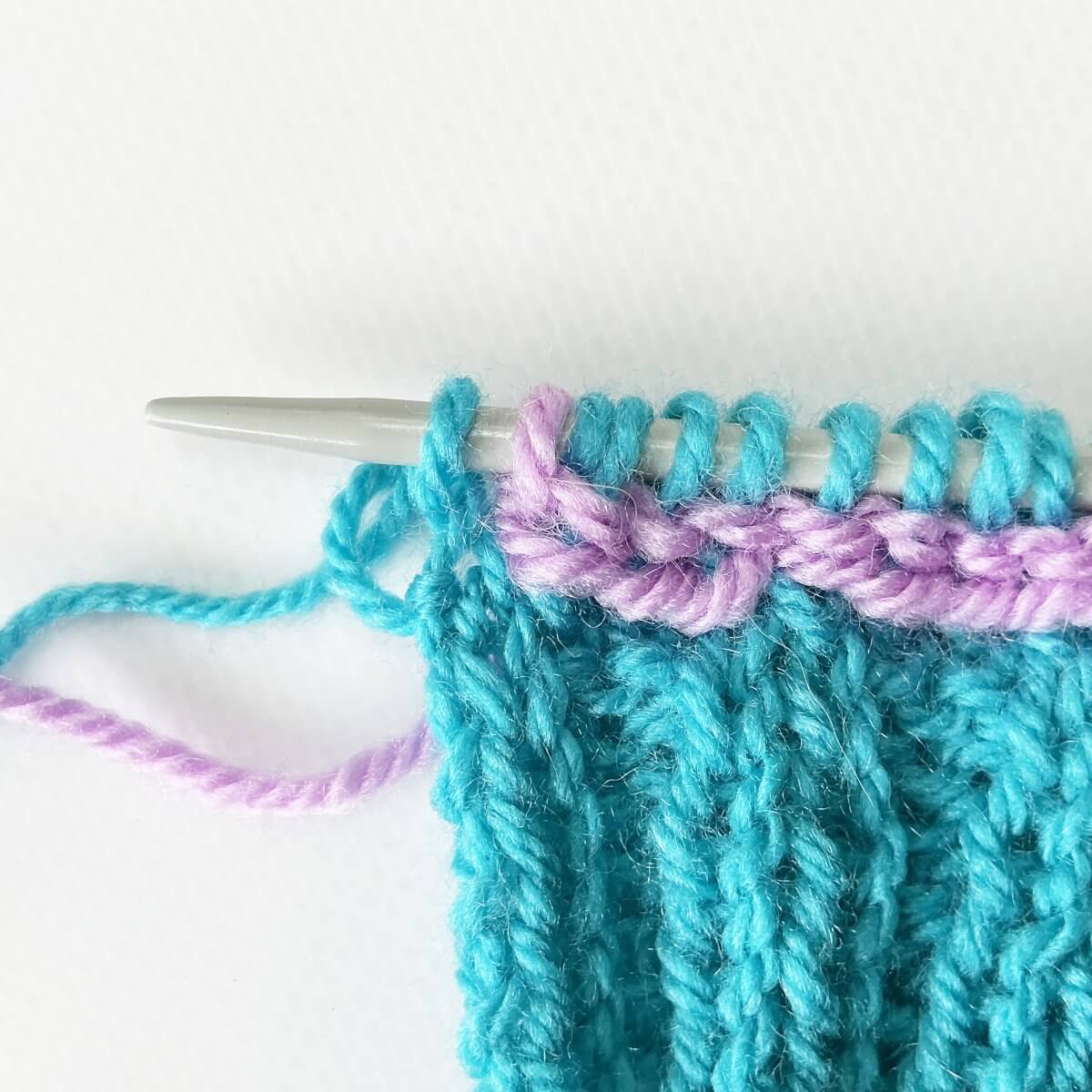
- Now insert the left-hand needle into the last stitch made with the CC yarn…
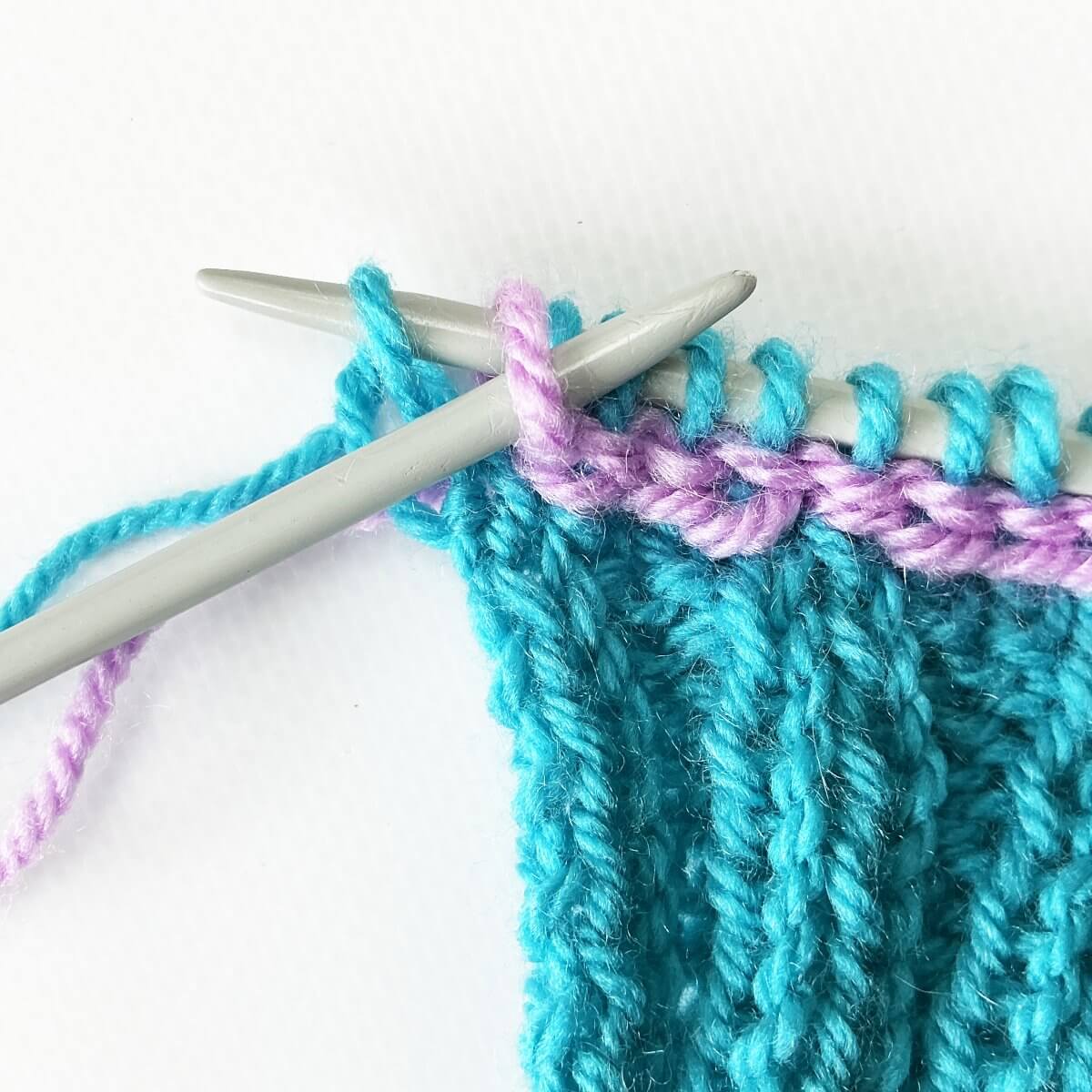
- … and pass it over the stitch just knit.
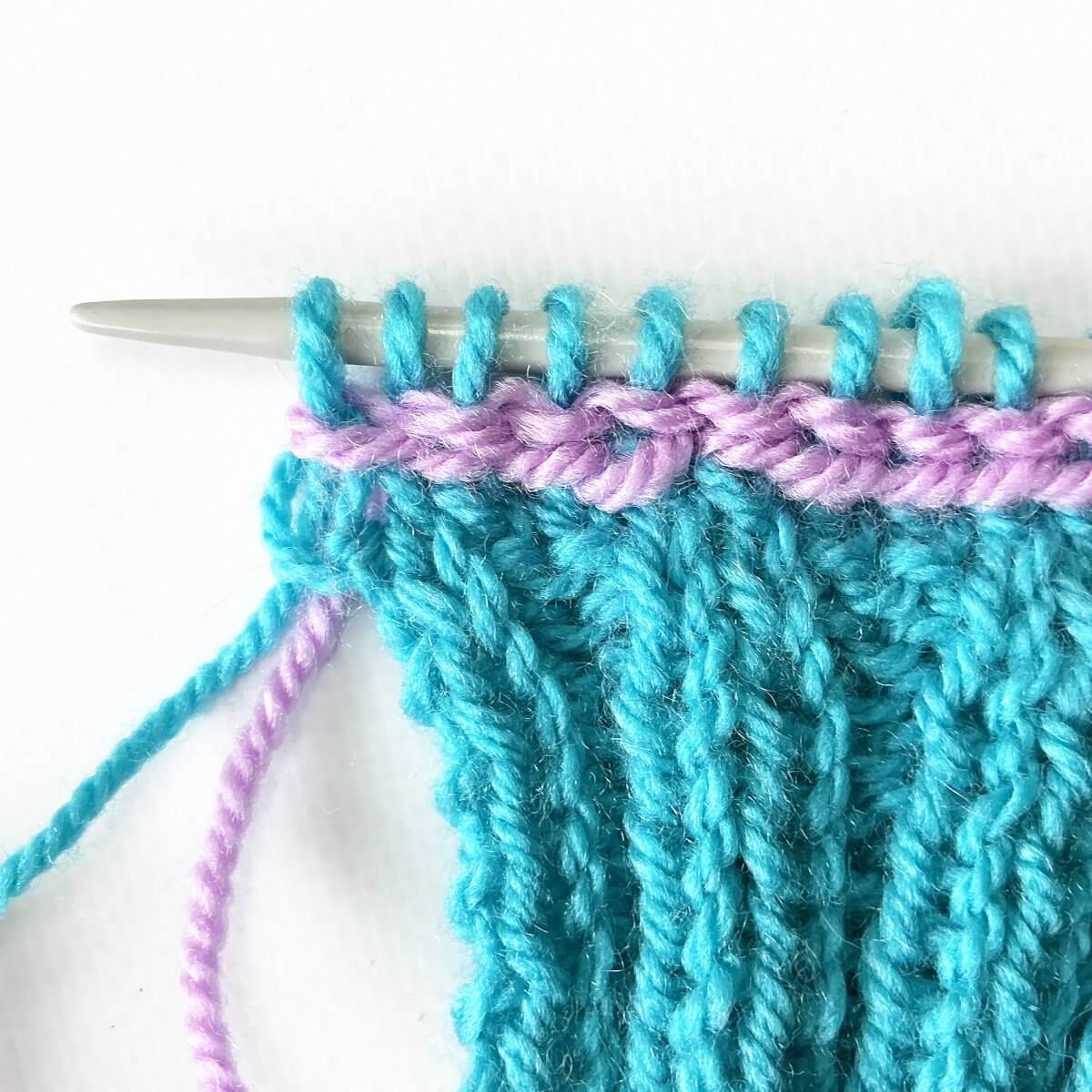
- Once we’ve done that last step, we can admire our result: A lovely Vikkel braid, worked in a contrasting color!
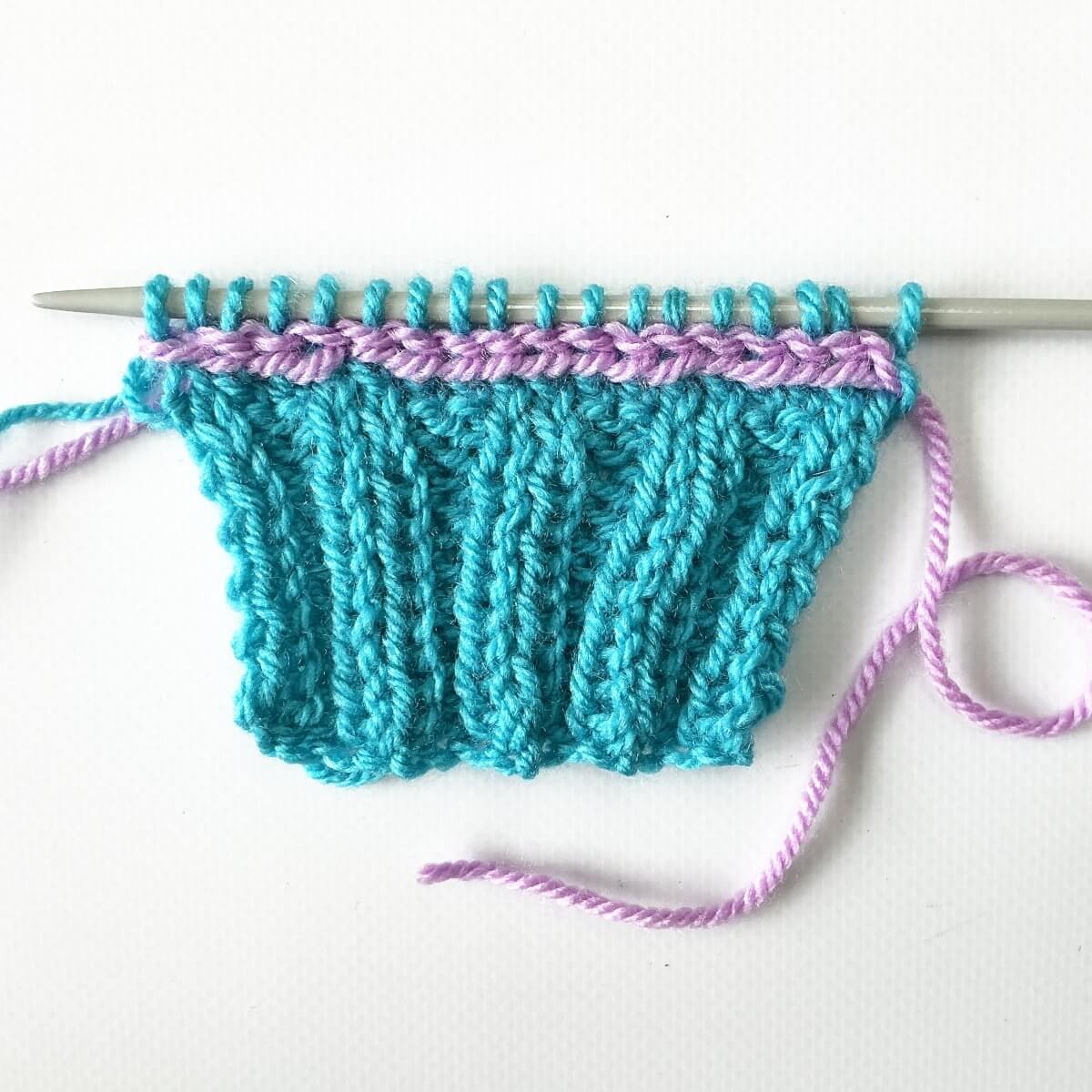

Thanks to my Patreon supporters for bringing you this freebie! Creating quality patterns and tutorials is a lot of work and resource-intensive. However, I find it important to give you free content like this tutorial. Thanks to the generous support of my Patreon supporters, I can make it happen. Thank you, patrons! Click here to join, or click here to read more about La Visch Designs on Patreon.

